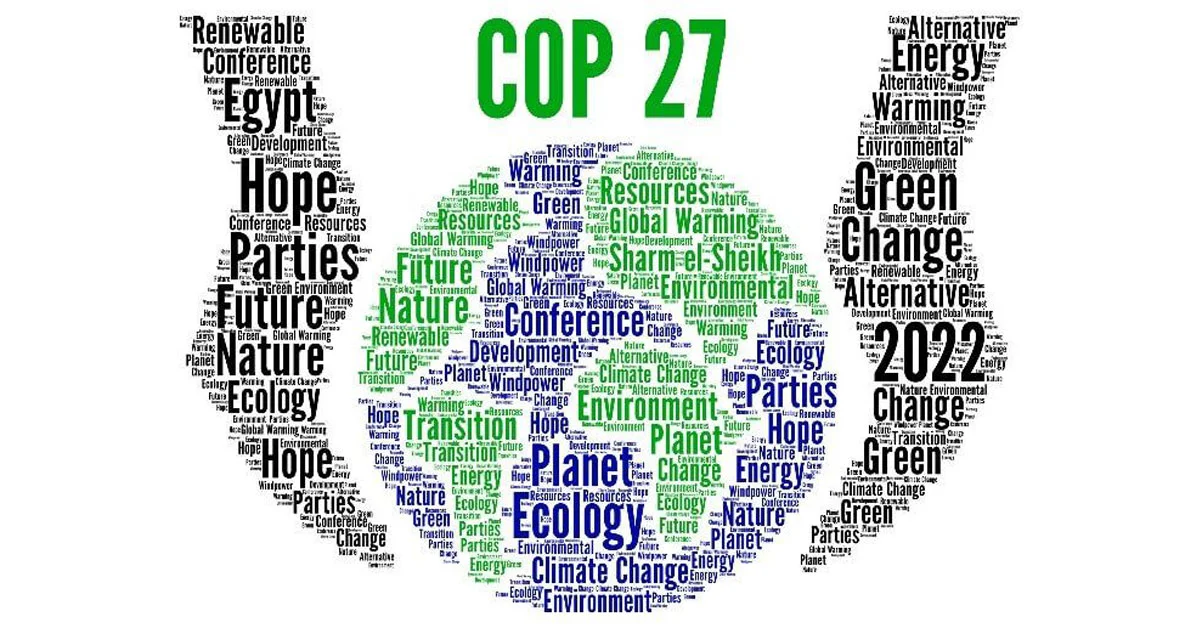COP27, or the 27th United Nations Climate Change Conference of the Parties, was held in November 2022 in Egypt. The summit focused on accelerating action towards meeting the goals set out by the Paris Agreement and furthering progress on climate change mitigation and adaptation. Over 200 countries signed up to participate in COP27 and discuss a range of topics related to climate change. The main purpose of COP27 was to provide an opportunity for nations around the world to come together and develop long-term strategies for effectively tackling climate change. During COP27, there were discussions about how countries can reduce emissions and how they can work together with other nations to implement low-carbon development plans that will help mitigate global warming. Additionally, this conference provided an opportunity for experts from different fields, such as economics, science, technology, policymaking, and civil society, to collaborate on solutions for climate change challenges.

COP27 Goals
A significant step forward was the establishment of a dedicated loss and damage fund, which was first approved during COP27 and was added to the formal agenda. To help developing nations respond to loss and damage, governments made the ground-breaking decision to create new financial arrangements and a dedicated fund. Additionally, governments concurred to form a “transitional committee” to advise on how to operationalize the new financial arrangements and the fund at COP28 the following year. Before the end of March 2023, the transitional committee’s inaugural meeting is anticipated. The institutional framework for the Santiago Network for Loss and Damage’s operationalization, which will help spur technical aid to developing nations that are particularly susceptible to the negative consequences of climate change, was also agreed upon by the parties.
At COP27, world leaders are expected to take decisive action to reduce greenhouse gas emissions and move closer to meeting the goals set out in the agreement. The focus of this particular summit was creating transformational change through international cooperation, public-private partnerships, innovative financing mechanisms, and effective policy measures. Discussions at COP27 included topics such as strengthening climate action plans, addressing loss and damage from climate-related events, increasing access to finance for developing countries, implementing adaptation strategies, improving energy efficiency, building resilience within vulnerable communities, and encouraging private sector involvement in climate action activities.
Key points includes:
1. Loss & Damage
Rich countries should help poor countries in case of loss and damage from natural calamities like flood.
2. Temp Limit 1.5°C
2°C temp rise by the end of 2050 was agreed in earlier COPs but now they have reconsidered it and finalized 1.5°C as the temp cap.
3. Gas
We have to reduce emissions, and gas has lower emissions than coal so it should be preferred. This campaign was led by India and other countries.
4. Fossil Fuels
First time in 30years, a decreased trend in use of fossil fuels was observed and goal set in COP26 is nearly achieved.
5. World Bank Failing
Current system and policies of World Bank is failing to provide funds to needy countries in time of need due to poor policy.
6. Adaptation
Rich countries are not providing aid of $200Bn to poor countries as agreed upon in COP26. Till now, only $20Bn has been paid.
Focus of Egypt in COP27
The COP27 meetings held in Egypt in November 2022 were strongly focused on the new initiative for an integrated renewable energy system across North Africa, known as ANK. This ambitious project is set to provide much-needed access to sustainable energy sources and create a strong foundation for environmental conservation across the region. The event was attended by several prominent leaders from all over Africa, including those from the African Union, who announced their support for the new system.The proposed ANK network will bring together several renewable energy sources such as solar, wind and hydroelectricity in order to produce an affordable source of electricity that can be accessed by communities throughout North Africa. It also includes plans to develop efficient storage solutions and smart grids that can help reduce emissions while still providing reliable power supply. Furthermore, local governments are also encouraged to invest in clean transport solutions such as electric buses and bikes in order to reduce pollution and the reliance on fossil fuels. The ANK project forms part of Africa’s broader plans to switch from fossil fuels to renewable energy sources by 2050.
Challenges and Opportunities Ahead
COP27 gathering brought together world leaders from across the globe to discuss their commitments and objectives for tackling climate change. With nations increasingly coming to terms with the consequences of global warming, there are both challenges and opportunities ahead. The first challenge that COP27 addressed was finding ways to reduce greenhouse gas emissions and limit global warming in order to protect our planet against irreversible damage. In addition, discussions focused on ways for countries to finance green initiatives and support sustainable development goals so that no one is left behind in this fight against climate change. However, COP27 also opened up a number of opportunities for nations around the world.
Impact on Global Climate Change Efforts
The COP27 will be remembered as a major turning point in global climate change efforts. After years of international disagreements and stalemates on the issue, this summit marks the first time that world leaders have come to a consensus on the need for urgent action. The outcome of COP27 is expected to have far-reaching implications for countries around the world and their commitment to reducing emissions and combating climate change.
At COP27, delegates from over 200 nations came together with one main goal: to agree on effective strategies for protecting our planet from the effects of climate change. In order to reach consensus, participants discussed topics such as how best to reduce carbon emissions, how different countries can contribute financially towards these efforts, and how technology can help mitigate some of the long-term impacts of climate change.

Conclusion
The outcome COP27 was significant for the global community. Held virtually at multiple locations, COP27 was an opportunity for countries to come together and discuss strategies that would help promote sustainable development and tackle climate change. The two-week event witnessed key discussions on a range of topics such as mitigation targets, energy efficiency initiatives, renewable energy investment plans and adaptation measures. Most notably, COP27 concluded with the signing of a landmark agreement – ‘The strategic action plan’ – which set out clear goals that nations must work towards in order to achieve carbon neutrality by 2050. The agreement also highlighted funding requirements as well as specific actions required from each country to reach their respective emissions reduction targets. A gateway to COP28.
Ends with establish and operationalize a loss and damage fund. “Together, let’s not relent in the fight for climate justice and climate ambition,”
As the global community converges at COP27 to address pressing environmental concerns, it is crucial to highlight key initiatives promoting sustainability. E-waste recycling stands out as a significant contributor, responsibly managing discarded electronics to reduce environmental impact and foster a circular economy. This practice not only minimizes hazardous waste but also extracts valuable resources, underscoring the importance of responsible electronic waste management.
In addition, recharging wells emerges as another vital strategy, involving the deliberate restoration of groundwater levels. This practice plays a crucial role in maintaining water security and supporting ecosystems. The sustainable recharge of wells ensures a lasting balance in aquifers, delivering benefits to both human communities and the broader environment. These efforts collectively signify a commitment to environmental stewardship and a resilient, sustainable future.

